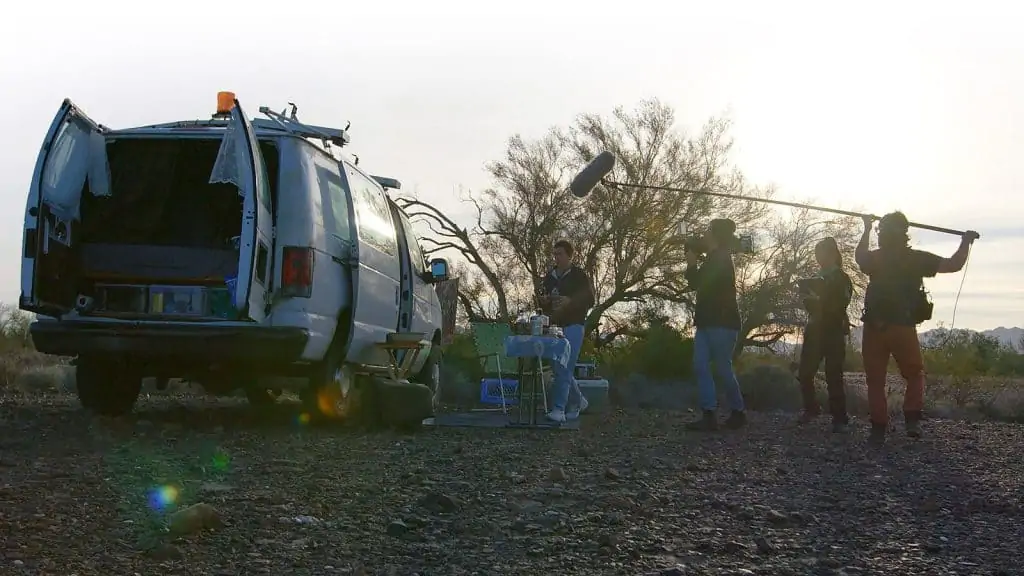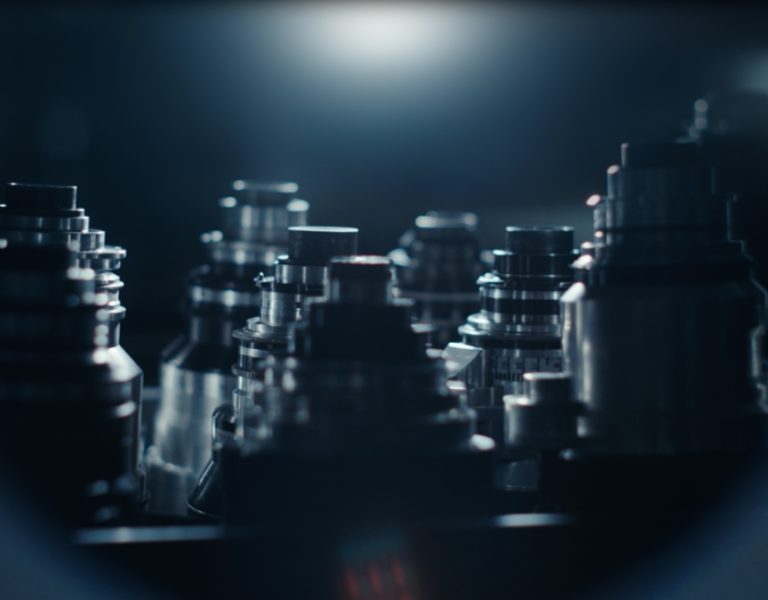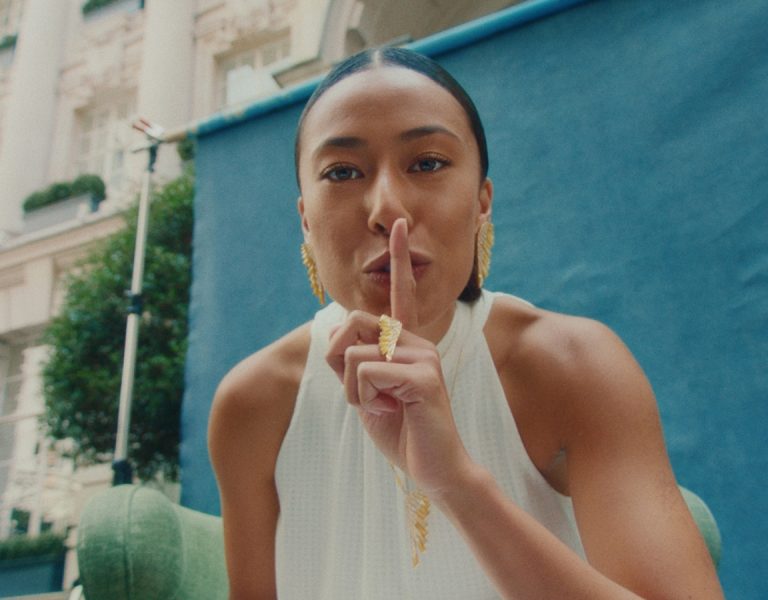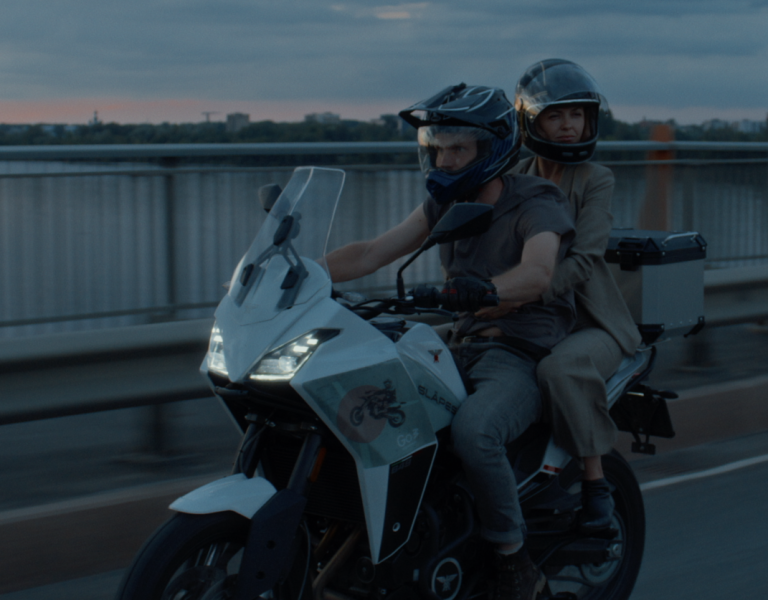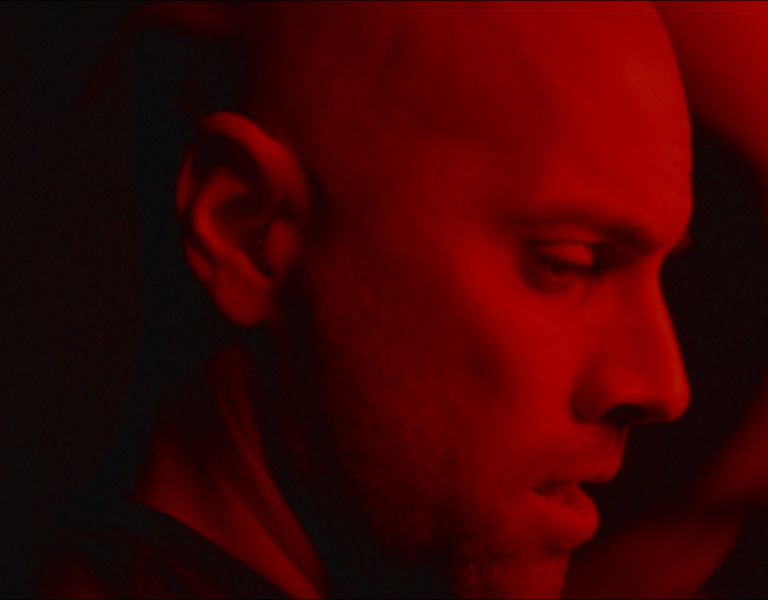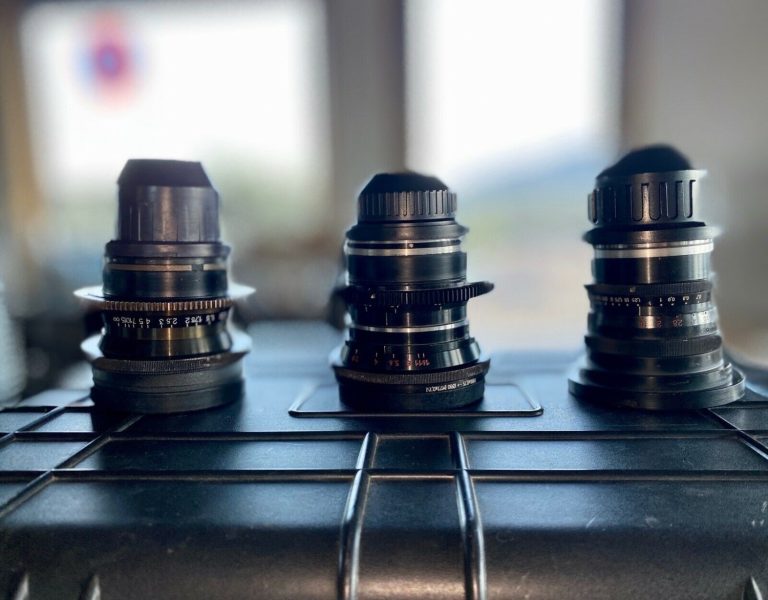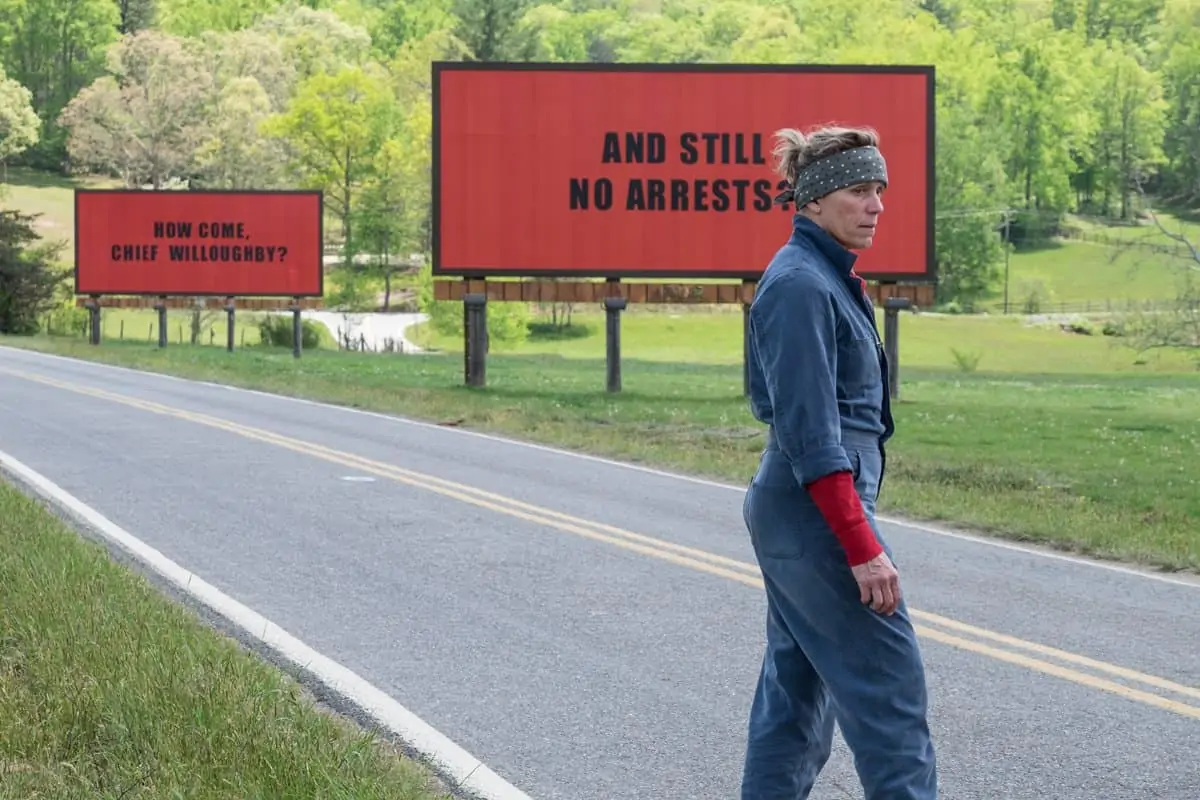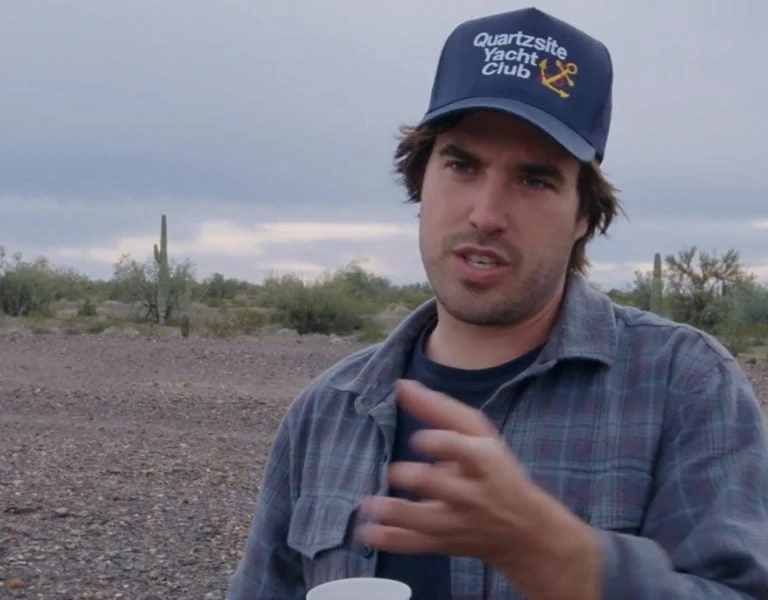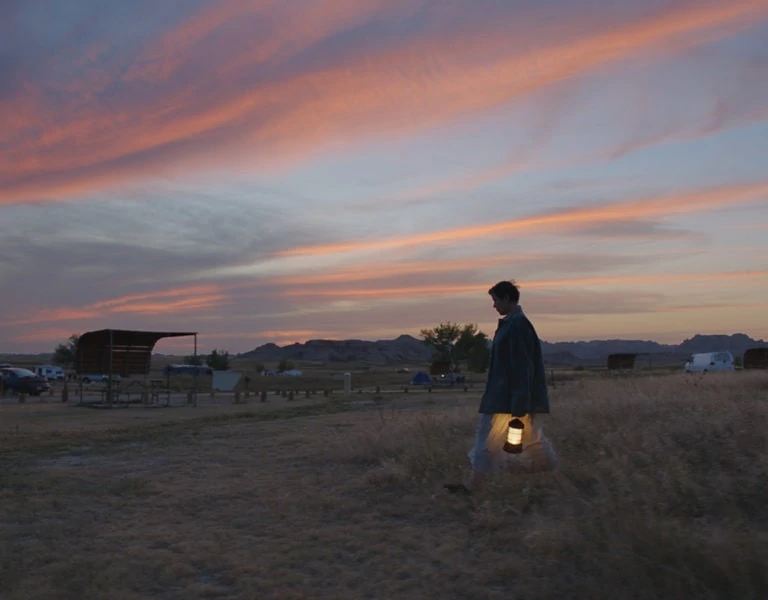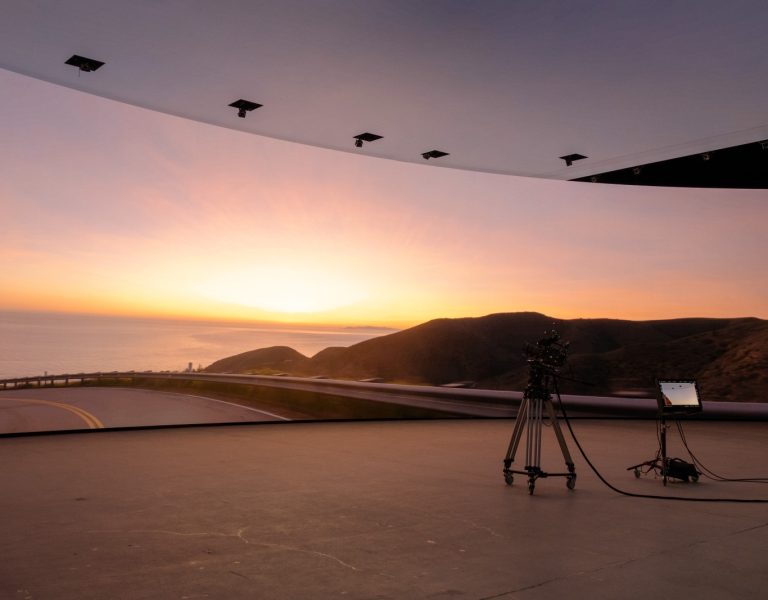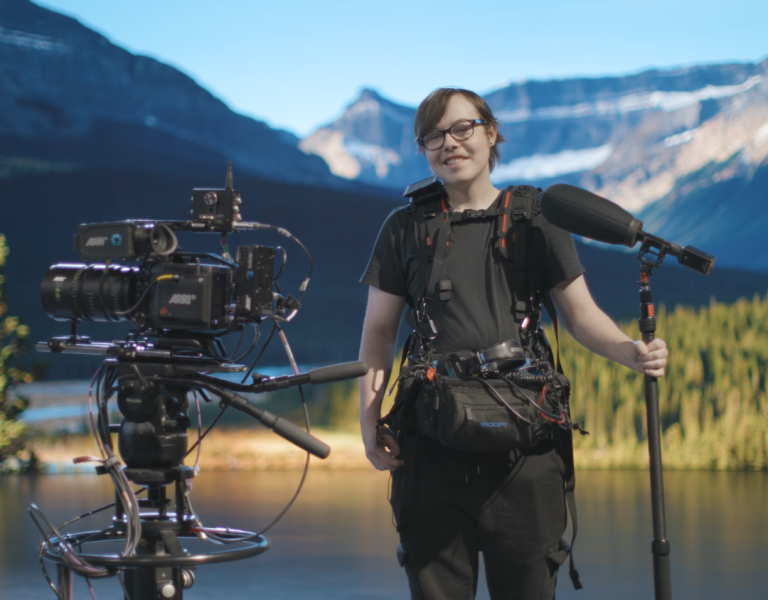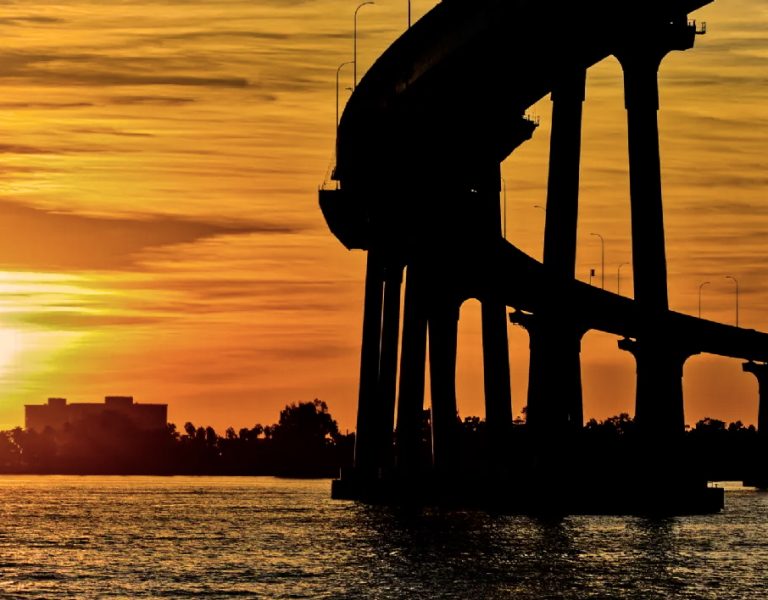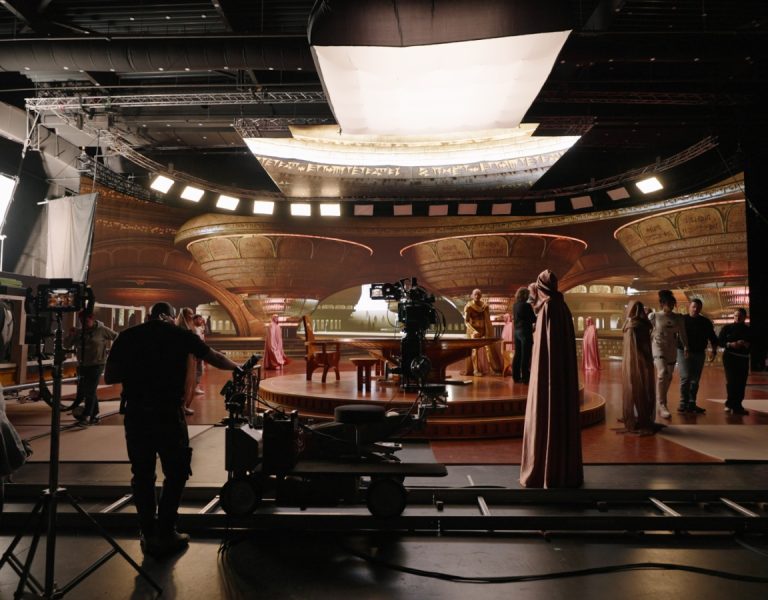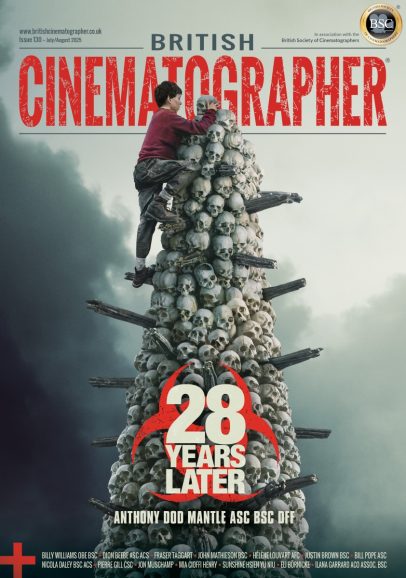ON THE ROAD
Joshua James Richards shoots the third feature film from director Chloé Zhao – the intimate story of self-discovery, Nomadland.
The United States’ growing population of middle-aged drifters, many being forced out of their homes by the 2008 recession and on to the road, is the subject of director Chloé Zhao’s third feature. It has wowed critics with its naturalistic take on a story which neither sentimentalises nor overtly politicises their plight. In fact, it’s a deeply intimate and lyrical journey of self-discovery.
Inspired by a nonfiction book by the journalist Jessica Bruder, Nomadland features Frances McDormand, a friend of Zhao whose previous two features Songs My Brother Taught Me (2015) and The Rider (2017), are celebrated dramas about marginalised people. They both captured life choices and poverty in the starkly beautiful plains of the Pine Ridge Reservation in South Dakota. Both cast locals instead of actors and were photographed by British DP Joshua James Richards who met Zhao at film school in New York. The difference with Nomadland is the presence of two-time Oscar winner McDormand (Fargo, Three Billboards Outside Ebbing, Missouri).
“Fran came to Chloé with the book and a vague idea that [Zhao] would be good to direct it,” Richards explains of Nomadland’s feature inception. “She said she wasn’t interested in doing a film drama with star actors playing these real-life characters but wondered if we took Fran and we dropped her into the world of The Rider. Now that is something to get excited about.
“My next question was ‘do you want me to shoot it?’” he says. “I don’t take it for granted. I honestly feel it’s a privilege to get a chance to shoot a movie like that. So, I don’t take it lightly that she would choose me. It felt like a big responsibility.”
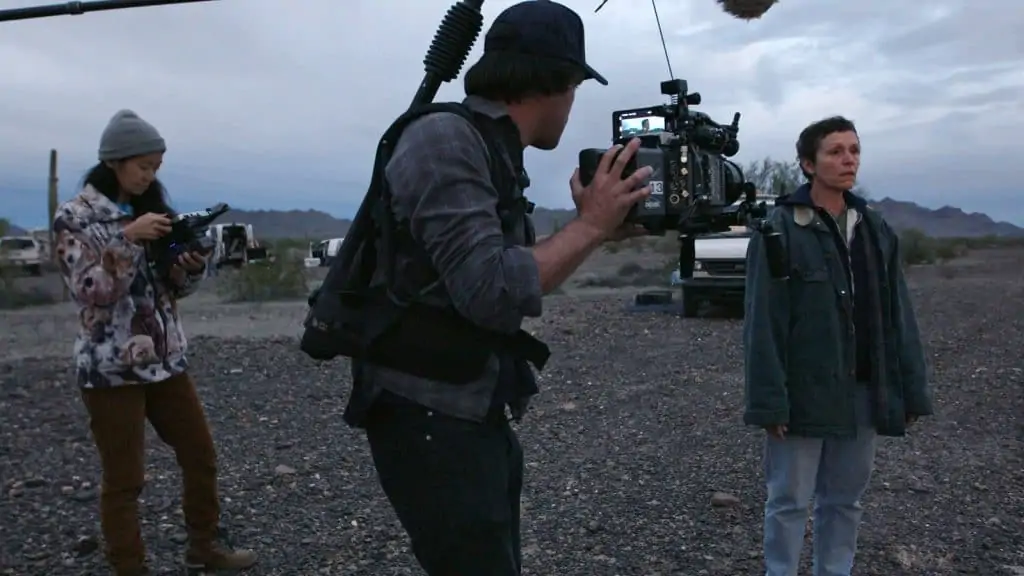
It is worth stating that Zhao and Richards are partners and have honed their approach to filming these stories together.
“We want to give the audience the emotional experience of the characters,” he says. “All of us, are first and foremost, emotional creatures. We feel emotion before we understand it. You should feel poetry before you understand it. To me, the really powerful thing about cinema is the way it can create empathy and make us understand somebody else’s point of view when we feel it. That’s the engine behind what I am trying to do visually.”
Richards says Werner Herzog’s philosophy of ‘ecstatic truth’ had a profound influence. “In his 2002 documentary Land of Silence and Darkness [Herzog] put you inside the experience of people who are deaf and blind. He makes you stare into that world unflinchingly. Werner is close to those people and he wants to truly understand them. The camera is also there with them. That film blew my mind when I first saw it.”
Their approach to filming, which instead of straight documentary making, seeks the truth of a story by part fictionalising the narrative, emerged by accident.
“It happened when we lost the money to make Songs. Initially that had been a totally different project with a budget close to a million dollars. I remember sitting in the parking lot of ARRI after doing a lens test with Chloé thinking that I’m getting my break, fresh out of film school, straight into a little budget indie and it’s been pulled away from us.
“But we decided to just do it anyway. If nobody saw it then fine but let’s go make a movie with the bare minimum. What that did was change my life because this genuinely low budget indie film meant that we got lots of freedom to experiment. Because we had such a small crew and we created limitations for ourselves, it forced us to embrace the reality of things as they are. Rather than create an artifice and mould things into our vision, we had to find a way of telling a story out of what is already there.
“With Nomadland the overarching prerogative was to get intimate with the camera. The nomads need to know me and they need to feel safe. I’m not going to be up there on a hill with a telephoto lens. We’re trying to tell this story from the inside out, very much grounded in Fern’s point of view.”
To me, the really powerful thing about cinema is the way it can create empathy and make us understand somebody else’s point of view when we feel it. That’s the engine behind what I am trying to do visually.
Joshua James Richards
They drove to Arizona, Nevada, and Colorado to meet the principal (real-life) cast Swankie, Linda May and Bob Wills. Richards says, “Chloé has trust in me with performances. I’m testing to see what they look like on camera and also that they can be themselves on camera.”
He elaborates, “You can put an 18mm Ultra Prime right up to the face of a cowboy in South Dakota [as in The Rider] and you’re only going to get the authentic person. If you ask them to be someone else, they’ll quickly tell you where to go! When we met the nomads it was the same. We realised these people are what they are and if we can come into their world with a camera they’re going to trust us. But you can’t abuse that trust.
“It’s almost like a delicate candle that we must nurture and not snuff out with anything like heavy-handed equipment or large crew. At the same time, how close can we get without extinguishing the flame?”
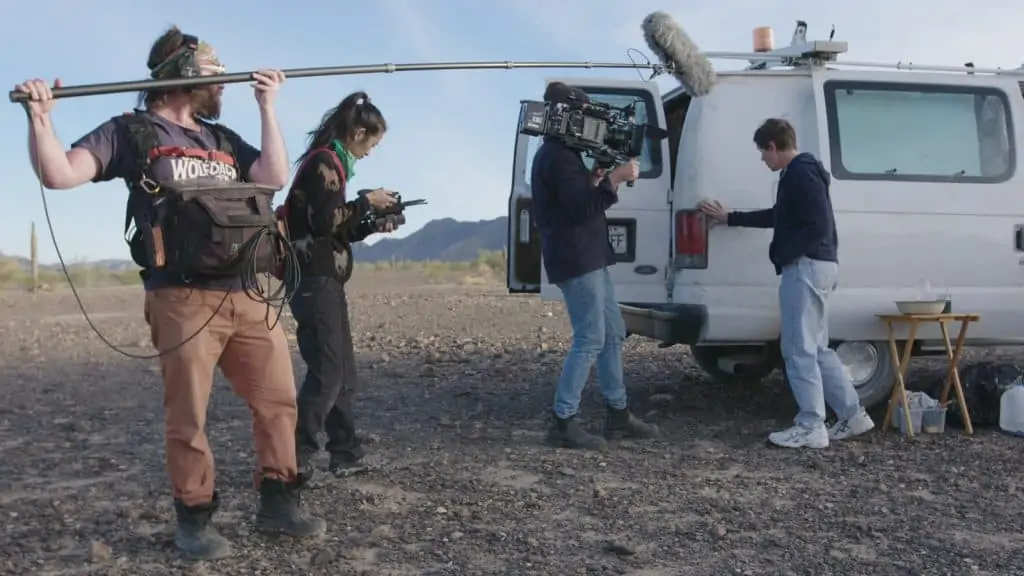
Zhao, Richards and boom op/sound mixer Wolf Snyder were the key skeleton crew. “Linda May’s van is 6ft across and there’s Linda May, me, Chloé, Wolf, Fran all in there so you need to make people feel safe in their own environment.”
Snyder worked with the duo on The Rider and is credited for his location sound recording. “I can run and gun as fast as I want and Wolf just needs to make eye contact and I know he’s on board. It’s intuitive. All the post mixers on Nomadland were like ‘who does your sound?’ because it’s so remarkable.”
Richards chose the Alexa Mini for its familiar ergonomics and small package. “You can get the body into corners of a tiny van. We used the Zeiss Ultra Primes which are our go-to lenses. They are perfect for this kind of natural light shooting and I’ve grown to like the distortion in them as well.”
Also unusual was the DP’s reference of stills photographers rather than cinematographers prior to shooting. Portrait photographers included William Eggleston, Shelby Lee Adams and Sally Mann while Andreas Gursky’s work aided depiction of giant Amazon warehouses where Fern is a seasonal worker.
“I suppose I didn’t find a film that felt like what we were doing,” he says.
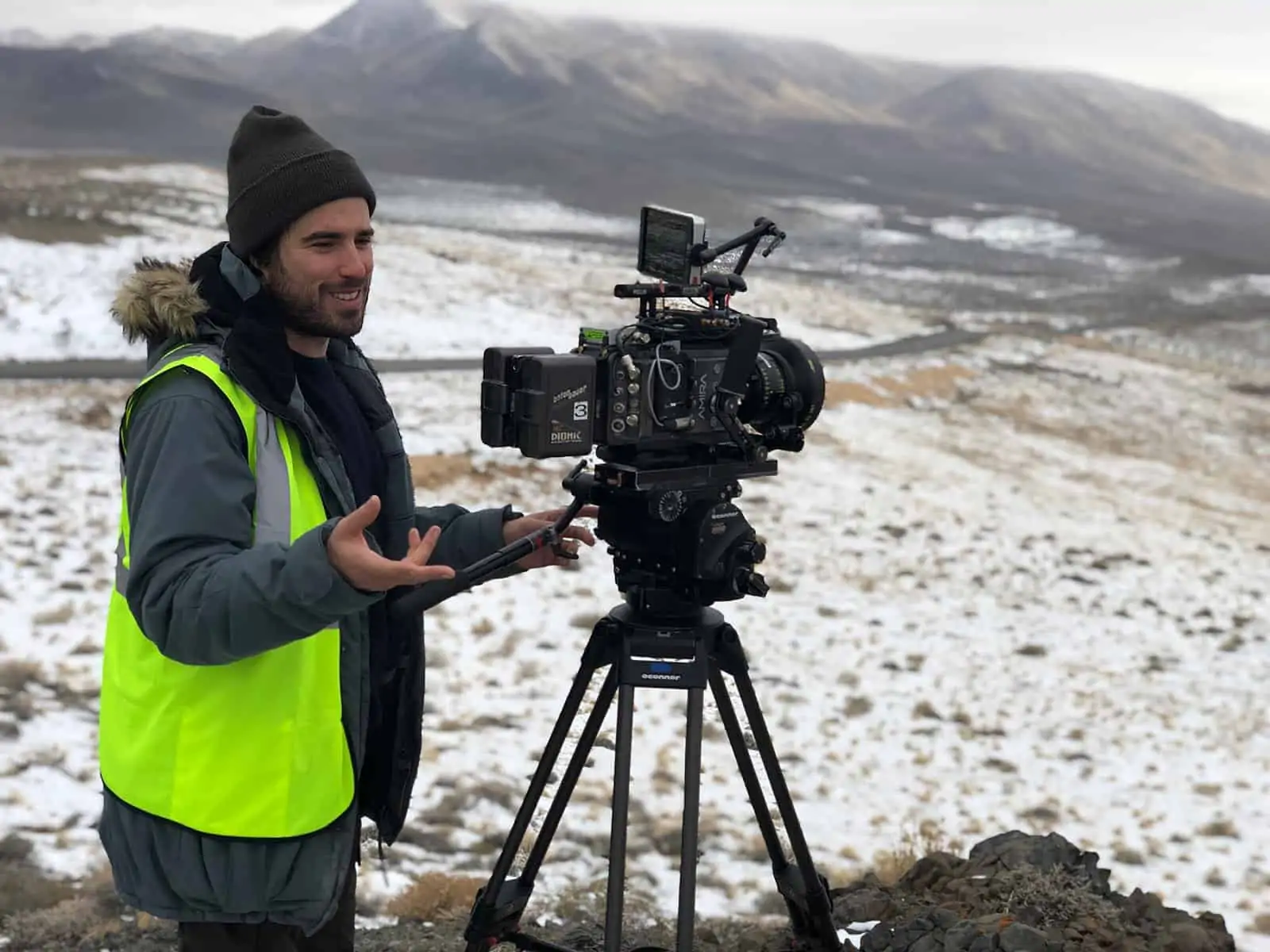
The film is shot in natural light and always at the end of the day to catch magic hour. “The driver was always the emotion of the scene and where Fern is in her journey. There’s not as much magic hour as it feels. There’s a scene when Fern drops some plates (a totem of her past life) and I felt it might be better to do it a bit earlier when the light is harder because at this point in the film Fern feels exposed that another person is coming into her space and accidently destroys a little piece of it. It’s a good example of a conscious decision to shoot a little earlier in the day. Here, we don’t need to have poetry, it should feel almost mundane.”
Nomadland is a road movie travelling through the Midwest to the Redwood Parks on the California coast and back again. Richards says he treated the landscape as an extension of Fern’s experience. “It’s a sublime landscape that creates an emotional tapestry of her journey. We scouted most places before shooting and so when we got there we were just playing with the nuance of light every day. Because there were so many locations, embracing magic hour helped create a consistency, as did back lighting people as much as possible.”
He adds, “We didn’t want to put down tracks and move the camera on cranes. We want to feel the characters in their environment constantly. You would miss so much of what the heartlands is about if we weren’t spontaneous with the light. Fern is discovering herself through the possibilities in the American landscape.”
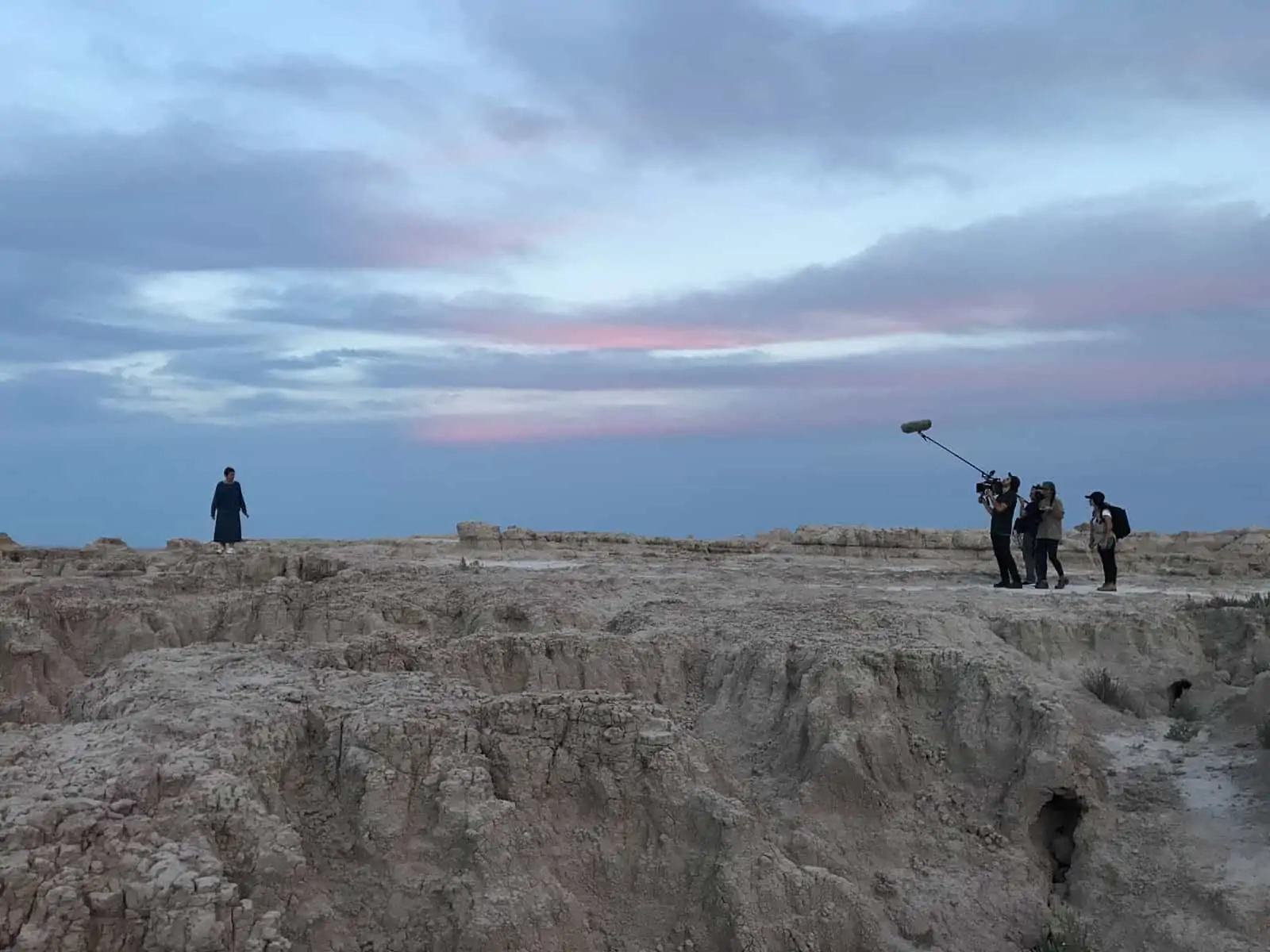
When they scouted Empire, a small town in Nevada’s Black Rock desert abandoned by its mining company employer, they found “a dust bowl tumble weed Mad Max zone frozen in time” but when they came to shoot it was covered with huge snow drifts. “We thought this had ruined the scene but when we explored further, we realised it was better. The snow differentiated it from other places and it seemed literally frozen in time.”
The narrative is composed of lots of detail, the paraphernalia and routines of day-to-day life on the road.
“Chloé and I always left other shoots feeling that we can never get enough of that texture,” he says. “So, we scheduled ample time for that kind of thing, mostly while waiting on the light. We split the crew and shot a lot of landscapes and a lot of macro details. 99.8% did not make it in – but you don’t want to leave these places without shooting everything. You’ve got to be greedy in these special places with special people. It’s like a treasure and you don’t want to feel like you’ve left something behind.”
Aside from the main characters, Zhao incorporated other travellers they met in the course of the film, improvising the script along the route.
“Scenes with conventional actors (including David Strathairn) would be blocked as normal. With our nomads we stepped back as filmmakers to allow the people to be themselves. We blocked it somewhat and made sure the crew understood where they needed to be.”
Richards adds, “One thing that characterises Chloé is her ability to remove her ego and understand that life will gift you things if you allow yourself to look outside your own screenplay. She created an environment and then put the camera in that. That’s really hard to do. “I feel grateful that I had the privilege of spending time with these people in that part of America,” he says. “Coming from England to make films in the American heartlands has made me grow as a person. It helped me understand that my initial perspective is usually completely inaccurate. At a time when politicians are telling us what makes us different, hopefully Nomadland will remind us how special most people really are.”
